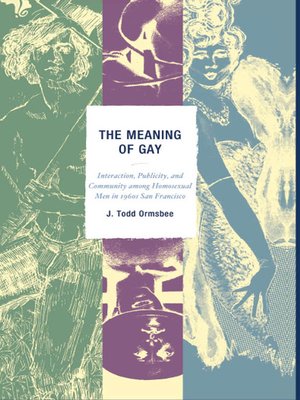The Meaning of Gay
ebook ∣ Interaction, Publicity, and Community among Homosexual Men in 1960s San Francisco
By Todd J. Ormsbee

Sign up to save your library
With an OverDrive account, you can save your favorite libraries for at-a-glance information about availability. Find out more about OverDrive accounts.
Find this title in Libby, the library reading app by OverDrive.



Search for a digital library with this title
Title found at these libraries:
| Library Name | Distance |
|---|---|
| Loading... |
Homosexual men in San Francisco had started the 1960s interacting mostly in private, informal groups, meeting in bars and house parties. But by 1972, the city had a 'gay community' and 'gay pride,' all celebrated with a parade. Through numerous organizations and publications, gay men created a counter-publicity to fight against their domination and subordination, and had begun to try to build a community that would foster deeper, more meaningful relationships with each other. The emergent counter-publicity and community in turn created the social spaces necessary for gay men to create an expanding range of possible meanings for their 'gayness,' meanings that aligned more closely with their experiences and which better helped them meet their needs and desires. The gayness they created could expand and contract depending on the needs and circumstances of the individual or group. Rather than the typical story of the evolution from 'conservative' to 'radical' social movement, The Meaning of Gay sees the development of gay politics as the shift from the need to establish a public-facing gayness in the early 1960s, to the community building efforts that began in the mid-1960s, through the efforts to create a gayness based in authenticity, brotherhood, and revolution in the early 1970s. Each of these developments flowed from gay men's responses to the swiftly changing San Francisco and American environment. The dramatic explosion of possibilities for gayness that emerged during the 1960s may serve as a touchstone for those concerned with the problems of gay male life in the twenty-first century. This book traces these developments as they was recorded in the gay periodicals of the era, and analyzes them from the perspective of John Dewey's theory of mind, desire, public, valuation, and democratic community.






